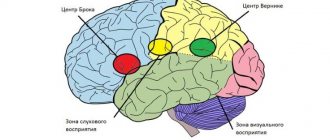When school begins, some students develop a specific speech therapy disorder—dysgraphia. A child with this diagnosis makes several mistakes in every word and writes extremely slowly and sloppily. At the same time, he does not have any special problems intellectually.
How does dysgraphia manifest itself in first-graders and how to cope with this pathological phenomenon? These questions are important, because if all the necessary measures are not taken, the student will gradually turn into an outcast and a loser.
Dysgraphia – what is it?
This speech therapy pathology is understood as a local or complete violation of the written function, associated with insufficient formation of the processes and mechanisms that are responsible for the implementation and control of written activity.
Most often, parents learn about difficulties with writing at the elementary level, when targeted teaching of this skill begins. Various errors are found in children's copybooks and notebooks: replacing letters (“z” instead of “s”, “b” instead of “p”), adding extra and omitting necessary letters, spelling words together and incorrectly forming syllables.
Looking at the mistakes of a dysgraphic child, one can conclude that he is illiterate or lazy, but the problems lie much deeper. For example, compare the words “sunny” - “solechnye” and “sunny” - “sunny”. In this example, the difference between dysgraphia (first example) and poor knowledge of the rules of the language is especially noticeable.
In addition, dysgraphic children usually write slowly, illegibly and unevenly, although they make a lot of effort to keep up with their more dexterous classmates. Constant failure, expressed in the teacher’s dissatisfaction and one’s own worries about the teacher’s notes in the notebook, leads to a decrease in self-esteem.
Experts also note that dysgraphia most often goes “hand in hand” with dyslexia, a pathological condition in which severe reading difficulties are diagnosed. All this significantly reduces the quality of learning and the child’s perception of new knowledge.
Etiology of dysgraphia
The issue of the etiology of dysgraphia is still controversial. Many scientists (M. Lamy, K. Lonay, M. Soule) note a hereditary predisposition. They believe that this is due to the fact that children inherit from their parents qualitative immaturity of the brain in its individual zones. This immaturity manifests itself in specific delays in the development of a certain function.
But most researchers studying the etiology of dysgraphia note the presence of pathological factors affecting the prenatal, natal and postnatal periods. The etiology of dysgraphia is associated with the influence of biological and social factors.
Functional reasons may be associated with the influence of internal (for example, long-term somatic diseases) and external (incorrect speech of others, lack of speech contacts, bilingualism in the family, insufficient attention to the child’s speech development on the part of adults) factors that delay the formation of mental functions involved in reading process.
Dysgraphia is often caused by organic damage to areas of the brain involved in the writing process. (Alalia, dysarthria, aphasia).
Writing disorders are very common in children with MMD, ODD, mental retardation, mental retardation, and ADD.
Thus, the etiology of dysgraphia involves both genetic and exogenous factors (pathology of pregnancy, childbirth, asphyxia, a “chain” of childhood infections, head injuries).
Types of dysgraphia and main symptoms
There are several types of violations of writing activity.
- Articulatory-acoustic dysgraphia. The child is not able to pronounce sounds correctly, therefore, when pronouncing, he writes letters incorrectly. Therapy for this disorder involves working on producing sounds.
- Acoustic. Errors in writing occur due to problems with phonemic hearing. The child does not differentiate sounds that are similar in sound: d-t, z-s, sh-s, zh-z. All this cannot but affect written work.
- Optical. Due to unformed visual-spatial perception, the child writes letters incorrectly: “mirrors”, does not complete, draws unnecessary details, replaces letters that are similar in graphic characteristics.
- Due to a violation of analysis and synthesis. The child skips or repeats words, syllabic and letter elements, confuses prefixes and conjunctions, writes words together that should be written separately, and vice versa.
- Ungrammatical. The child incorrectly changes words according to cases, numbers and gender. For example, “beautiful cat”, “bright sun”. Such disorders are often observed in children raised in bilingual families.
In particularly difficult situations, a child may have a combination of several types of dysgraphia. In addition, this pathology often occurs against the background of other speech therapy disorders.
What is dysgraphia and how does it manifest?
The main feature of dysgraphia can be considered its seemingly rather late diagnosis. The diagnosis of dysgraphia, in the overwhelming majority, is finally confirmed when the child reaches primary school age. The fact is that “written tongue-tiedness,” as experts call dysgraphia, can be diagnosed only after the child has mastered the basics of writing.
According to official statistics, in the 70s of the last century, about 11% of students with dysgraphia of varying degrees were identified among primary schoolchildren, today - from 20% (in secondary schools) to 30% (in gymnasiums). If 15-20 years ago, children with dysgraphia were extremely rare among high school students, today the age of such children has changed, students with dysgraphia are found in 8, 9 and even 11 grades.
Sometimes, parents, before entering school, were absolutely sure that they were growing up a smart, inquisitive, well-developing child, moreover, this was readily confirmed by all children's specialists, including a child psychologist. But after a short period of study, parents and teachers begin to notice some oddities, namely the presence of similar, repeatedly repeated errors in the student’s written speech:
- displacement of letters within a syllable;
- replacing some letters with others (sometimes similar in sound);
- “cutting off” word endings;
- non-compliance with the syllabic structure of the word (omitting entire syllables, rearranging them or adding extra letters);
- difficulties with the formation of handwriting - “dance of letters”, their different sizes when writing, sometimes individual letters can “fall out” under the line;
- slowness when writing.
Such errors appear against the background of absolute knowledge of the rules of spelling and spelling of words; the child quickly and easily declares the rule for spelling certain words, but is unable to write the words themselves without making mistakes.
The cause of dysgraphia disorders is a failure in the chain that is familiar to us: heard correctly (perceived the sound of each individual sound, their sequence), imagined how it should be written (translated the heard sounds into a visual image of letters), wrote it down (transmitted in writing the image of the heard letters and sounds).
This development of the situation is a reason to think about it, to observe the child more carefully (in no case should you scold or punish the child, or force him to repeatedly rewrite the text where mistakes were made - this will not give any positive results). If a similar problem recurs, perhaps we are talking about one of the types of dysgraphia in younger schoolchildren, which means it is necessary to contact specialists.
Correction of the disorder
A child who suffers from a writing disorder needs qualified support from a speech therapist-defectologist. The usual help of a teacher who is trying to instill literacy in a struggling student is not enough.
A course of correctional classes is drawn up after determining the type of dysgraphia and the severity of the speech therapy disorder. The work of a defectologist allows you to:
- eliminate deficiencies in pronunciation of sounds and phonemics;
- increase vocabulary;
- improve the grammatical side of the speech process;
- form coherent speech;
- develop analytical and synthetic capabilities;
- improve phonemic and spatial awareness;
- improve cognitive processes.
The skills that were acquired during correctional work are consolidated with the help of written exercises. In addition to a speech therapist, children need to be shown to a neurologist to determine the presence of various functional and organic brain lesions. If any are detected, the doctor will prescribe appropriate medications, physiotherapeutic procedures, therapeutic exercises and other measures.
Speech symptoms of dysgraphia
With dysgraphia, children in primary school have difficulty mastering writing: their dictations and the exercises they complete contain many grammatical errors. They don't use capital letters, punctuation, and have terrible handwriting. In middle and high school, children try to use short phrases with a limited set of words when writing, but when writing these words they make gross mistakes. Often children refuse to attend Russian language classes or complete written assignments. They develop a sense of their own inferiority, depression, and are isolated in the group. Adults with a similar defect have great difficulty composing a greeting card or a short letter; they try to find a job where they do not have to write anything.
In children with dysgraphia, individual letters are incorrectly oriented in space. They confuse letters that are similar in style: “Z” and “E”, “P” and “b” (soft sign).
They may not pay attention to the extra stick in the letter “Ш” or the “hook” in the letter “Ш”. Such children write slowly and unevenly; If they are not in the mood, then the handwriting becomes completely upset.
Prevention of dysgraphia in younger schoolchildren
Any types of both oral and written speech do not arise out of nowhere. Therefore, the prevention of dysgraphia in younger schoolchildren should begin literally from the first days of their life, paying great attention to the development of speech function. In case of speech disorders, the following factors play an important role in their development:
- Social environment;
- External environment;
- Anatomical and physiological capabilities.
Prevention of dysgraphia in younger schoolchildren should be based on the compensatory capabilities of the body of any person and in particular his nervous system.
Normal speech development involves several stages: humming, babbling, then a babbling monologue, and only then the baby begins to speak his first words, and a little later to construct sentences from them. Each stage of speech development must begin at a certain age and last for a certain time. Any violations of this development, for example, lack of walking, should be an alarm signal for parents!
Prevention of dysgraphia in younger schoolchildren should begin from birth, especially if the child has certain speech problems.
Dysgraphia: correction exercises
To successfully overcome the problem, there are a number of special exercises.
- For example, a child is asked to highlight certain letters in a written text. To do this, a text that is boring for the child is selected with a small number of paragraphs and a large font, in which it is proposed to cross out, for example, all the letters “a” in words, then all the letters “o” and so on. During the day, no more than 5 minutes are spent on this exercise. After a week, you can complicate the task: the child is asked to highlight 2 letters, cross out one and circle or underline the other. “Paired” letters are selected, those that the child confuses when writing (they can usually be found by looking at your student’s workbooks).
- Be sure to pronounce words when writing, paying attention to sounds that are pronounced differently from how they are written. That is, we say: “There was a jug on the steel,” and when writing this down, the child should say: “There was a jug on the table” (naming the letters that will be written). The main thing is not to forget to “voice out” the end of the word, since dysgraphia in schoolchildren is often manifested by not finishing words completely.
- It is very important to practice handwriting. To do this, in a notebook in a box, invite the child to write so that each letter of the word fits only in one of the boxes and fills it all.
How can you combat dysgraphia?
Correction of dysgraphia is, first of all, the joint work of parents, teachers and a qualified speech therapist, since mom and dad will not be able to solve this problem on their own.
It is important to remember that if a child has impairments in oral speech, then correction of dysgraphia begins with correction of pronunciation!
Classes with a speech therapist are conducted according to a developed system. For this purpose, various speech games are used, as well as a special alphabet for adding words and highlighting their grammatical elements.
During the learning process, a child must learn exactly how certain sounds are pronounced and what letters correspond to them. The speech therapist works with the child on the differences between hard and soft or dull and voiced pronunciation of sounds, repeating words, selecting them according to given sounds, analyzing the sound and letter composition of selected words, etc.
Often, children are helped by using visual material to memorize the outlines of letters, for example: “O” is a donut or hoop, “Zh” is a beetle, “S” is a crescent.
View gallery
A few words about E. V. Mazanova’s technique.
Mazanova E.V. excellently described the work with children diagnosed with dysgraphia in her works devoted to different types of this pathology. For each of them, a speech therapist of the highest category developed meaningful and colorful workbooks and albums. The methods of this author are widely used by specialists for practical training and, judging by the reviews, bring tangible success.
So, for example, Mazanova advises that in order to better memorize a letter image, ask children to sculpt them from plasticine, write in the air, trace along the finished contour, try to find differences in optically similar letters, find a specific letter when several images are superimposed on each other, etc.
But, despite the apparent accessibility and simplicity of the methods developed for the correction of dysgraphia, I would like to once again draw the attention of parents to the fact that it is unwise to study independently without regular consultations with a specialist with a child suffering from this pathology. You will waste valuable time and achieve minimal results!
View gallery
Is dysgraphia an independent disease, and can it be prevented?
We can safely say when talking about the diagnosis of “dysgraphia” that this is not an independent disease, since it usually accompanies some pathologies of a neurological nature, hearing impairment, motor system, auditory or visual analyzer.
View gallery
The possibility of preventing this problem is still an open question. Experts believe that the prevention of dysgraphia is impossible in principle, since in modern medicine there is no clear understanding of the causes of this pathology. But it is absolutely possible to identify the risk of dysgraphia or its early signs even before entering school, which can greatly facilitate the fight against it.
Typically, these include children from bilingual families, retrained left-handers, children with disorders of sound reproduction, as well as concentration and memory. Such children should be shown to a speech therapist and special testing should be carried out with them in order to be able to begin correction as early as possible.
Mechanism of dysgraphia
To understand the mechanism of development of dysgraphia, I will start from afar. We are known to have at least three types of hearing. The first hearing is physical. It allows us to distinguish the noise of leaves and rain, summer thunder, the buzz of a bee, the squeak of a mosquito, as well as urban sounds: the hum of an airliner, the clatter of train wheels, the rustling of car tires... The second type is musical hearing. Thanks to this, we can enjoy the melody of our favorite song and the beautiful music of great composers. Finally, the third type is speech hearing. You can have a good ear for music and a very poor ear for speech. The latter allows you to understand speech, capture the subtlest nuances of what is said, and distinguish one sound from another. If speech hearing is insufficient, similar consonances cannot be distinguished, and spoken speech is perceived distorted.
If a child has impaired speech hearing, then, of course, it is very difficult for him to learn to read and write. In fact, how can he read if he can’t hear the speech clearly? Is he also incapable of mastering writing? Is he unable to hear spoken speech clearly? He is also unable to master writing, since he does not know what sound this or that letter represents. The task is further complicated by the fact that the child must correctly grasp a certain sound and imagine it as a sign (letter) in the fast stream of speech he perceives. Therefore, teaching literacy to a child with defective speech hearing is a complex pedagogical problem.
But it is necessary to learn, because the distortion of one or two sounds changes the meaning of the word. Compare, for example, the words “daughter-dot”, “coal-corner”, “stick-beam”, “cup-Sashka”. Replacing a dull sound with a voiced sound, a hard sound with a soft sound, a hissing sound with a whistling sound gives the word new content.
Along with speech (phonemic) hearing, people have special vision for letters. It turns out that simply seeing the world around us (light, trees, people, various objects) is not enough to master writing. It is necessary to have vision for letters, allowing you to remember and reproduce their outlines.
This means that for full-fledged education, a child must have satisfactory intellectual development, speech hearing and special vision for letters. Otherwise, he will not be able to successfully master reading and writing. It is no coincidence that psychoneurologists and speech therapists, when meeting a low-achieving schoolchild, carefully study the contents of his notebooks, his handwriting, and the peculiarities of his speech. Often, a child’s low academic performance is explained not by the state of his intelligence, but by the presence of specific writing disorders, which I am talking about. Of course, only a specialist can recognize such disorders. Which area of the brain is responsible for writing? It turns out that the center of speech for most people is in the left hemisphere. The right hemisphere of the brain “manages” object symbols and visual images. Therefore, peoples whose writing is represented by hieroglyphs (for example, the Chinese) have a better developed right half of the brain. Writing and reading among Chinese residents, unlike Europeans, will suffer if there is a problem on the right side (for example, with a cerebral hemorrhage).
The anatomical features of the central nervous system explain the facts known to doctors that dysgraphics have good drawing abilities. Such a child has difficulty mastering writing, but receives praise from the art teacher. This is as it should be, because in this child the more “ancient”, automated area of the right hemisphere is not altered in any way. Problems with the Russian language do not prevent these children from “explaining themselves” with the help of drawings (as in ancient times - through images on rocks, birch bark, and clay products).
Speech therapists sometimes pay attention to the “mirror” nature of patients’ writing. In this case, the letters are turned in the other direction - as in the image in a mirror. Example: “C” and “W” open to the left; “Ch” and “P” are written in the other direction in the prominent part... Mirror writing is observed in various disorders, however, with a similar phenomenon, the doctor looks for obvious or hidden left-handedness. He searches and often finds: mirror reversals of letters are a characteristic feature of left-handed people.
Symptoms of dysgraphia
With this disorder, children make a lot of “stupid” mistakes when writing, for example, not writing capital letters. For this, they are often scolded by adults, and their classmates make fun of them. As a result, the child begins to refuse to go to classes, withdraws into himself and develops a depressive state.
One of the symptoms of dysgraphia is that the child confuses the letters “E” and “Z” or “b” and “P”. Children with this pathology write very slowly when taking dictation, and their handwriting is sometimes so uneven that it is almost impossible to decipher it. It should be understood that if errors in dictations are associated with the child’s ignorance of the rules of grammar, then they do not relate to the concept of dysgraphia.
Dysgraphia is characterized by the appearance of errors in strong phonetic positions. For example, a child writes “korofa” instead of the word “cow,” or “dm” instead of “smoke.” But ordinary spelling errors usually occur in weak positions. Let’s say instead of “sprout” the child writes “rostok”.
We can talk about dysgraphia only in school-age children, since for preschoolers they are still considered one of the variants of the physiological norm.
Dysgraphia is not considered an independent disorder. Usually this pathology is combined with various neurological dysfunctions, dysfunctions of the visual, speech, motor or auditory analyzer.
Some advice for parents
If your child has dysgraphia, do not scold him for mistakes, do not force him to rewrite the text many times, otherwise you will only make the child lack confidence in his abilities and instill in him a dislike for writing and reading. Be sure to praise your child for every success, but do not overpraise. In addition, do not show your strong concern about the problem that has arisen, so as not to develop a feeling of inferiority in the child.
When diagnosing dysgraphia, it must be taken into account that this is, as a rule, a condition in which good visual memory develops (as a replacement for a defect), so such children should not be offered exercises where they need to correct initially made mistakes. This may do the child a disservice.
In such cases, dictations are written slowly, with all letters and punctuation marks pronounced before the start of writing, and then during it.
View gallery
Precautionary measures
Activities for the development of motor skills are one of the ways to prevent dysgraphia
Prevention of dysgraphia in children includes the following activities:
- development of mental functions even before the start of mastering writing;
- activities to develop gross and fine motor skills;
- educational games;
- exercises to develop memory, attention, thinking;
- lessons on a musical instrument.
If the child does not have a serious disorder, then dysgraphia can be made reversible. It is important to work with your baby, starting from an early age, to develop his skills. At the slightest suspicion of dysgraphia, you need to promptly contact specialists to confirm the diagnosis and begin correcting the condition.
Speech therapist Anna Belik
Dysgraphia (dis – disorder, grapho – write) is a partial impairment of writing.
This diagnosis is made when systematic errors are made in writing. It is not at all necessary that you do not know the rules of grammar. Such errors are so inexplicable from the outside that they seem like typos. These are substitutions, omissions, rearrangement of letters, insertion of extra ones, lack or excess of spaces between words, division of one word into parts. For example, “stod” instead of “table”, “kneg” instead of “book”. Another sign of dysgraphia in children is confusion with “externally” similar letters (such as capital “d” and “b”, “p” and “t”) and extra “sticks” and “hooks” for the letters “Sh” and "SCH".
However, do not rush to diagnose your child with dysgraphia in preschool age - difficulties at the initial stage of mastering the science of writing are natural. You should be wary if the school “experience” has exceeded six months, and mistakes have taken root.
During the diagnosis, one of the types of dysgraphia is determined:
- articulatory-acoustic - associated with a violation of the speech apparatus and sound perception
- acoustic - based on the violation of sound differences
- due to a violation of language analysis and synthesis
- ungrammatical
- optical
What are the possible causes of dysgraphia?
- first of all, neurological disorders (PEP, birth trauma and others), because the cerebral cortex is responsible for speech.
- long-term somatic diseases
- unfavorable external factors (“unexample” speech of others, bilingualism, pedagogical neglect)
There are widespread cases where dysgraphia is caused by a combination of speech and neuropsychiatric disorders.
In any case, the main thing is to identify and eliminate the cause of the writing disorder.
The appearance of dysgraphia can also be caused by the violation/absence of the following necessary conditions for the development of writing skills:
- you pronounce all speech sounds correctly, you accurately identify each sound by ear, you can isolate the sound against the background of a whole word and determine its location in it;
- grammatical skill: you know how to coordinate words (for example, the genders of a noun and its related adjective), use prepositions correctly;
- ideas about space and time are fully formed. You do not have any difficulties in determining the shape, size, location of objects, you understand the sequence of certain phenomena.
Written speech is much more difficult to correct than oral speech. Writing impairments (and, as a consequence, deterioration in academic performance) are most often caused by defects in sound pronunciation that were not corrected in time. That is why it is necessary to eliminate the latter as early as possible.
A serious obstacle to overcoming dysgraphia is speech hearing impairment. But, no matter how difficult the problem, it will have to be solved, because the distortion of even one sound can leave the statement unintelligible. Rest assured: this problem is completely surmountable.
What does working to eliminate dysgraphia include?
- development of speech hearing
- “establishing” phonemic mechanisms
- training of auditory attention and auditory-speech memory
- sound-letter analysis of words
A speech therapist will teach you to distinguish hard from soft pronunciation, and deaf from voiced. The most difficult thing for a child in this work is to correctly “translate” the heard sound into the language of signs, that is, letters, that is, to learn to quickly navigate the rapid flow of perceived speech.
To fully and completely eliminate dysgraphia, coordinated cooperation between a speech therapist, psychologist, neurologist and parents is necessary.
Well, if you haven’t had to deal with dysgraphia yet, here are some recommendations for prevention
As soon as the child is 2 years old, carefully and systematically analyze his developing speech and behavior:
- Are there any difficulties in distinguishing speech sounds?
- Is he sufficiently oriented in space and time (is he aware of the concepts of “seasons”, “days of the week”, “yesterday-today”, “before-now”)
- Isn't there left-handedness?
- Is your vocabulary sufficient?
- Is the construction of the phrase consistent with the norm?
If the result of such an analysis is unsatisfactory according to at least one of the criteria, immediately begin work on eliminating the “weak link”.
From practice
Zhenya, 3rd grade
Initial data: stable poor performance in the Russian language, dysarthria, fixed errors when writing (does not put a period at the end of a sentence, confuses the letters E and Z, O and A, 1st grade spelling rules have not been learned, prepositions are mixed together), reading is slow and with errors.
From the anamnesis: residual encephalopathy, speech appeared at 4 years old.
The diagnosis revealed: rapid fatigue, distractibility, neurosis-like behavior, memory loss, poor orientation in space and time, low motivation to study. The child was sent for examination and treatment by a neurologist; in parallel, systematic corrective speech therapy sessions were carried out.
Diagnosis: mixed type writing disorder.
As a result of working with a speech therapist, the number of errors in writing decreased, academic performance increased, and the child began to attend school with enthusiasm.
Katya, 2nd grade
Poor progress in the Russian language: when writing from dictation, he makes a large number of mistakes (replacing the letters B with D, O with A, U with I, omissions of letters and syllables, errors in writing the endings of words, spelling words and prepositions together). Reading is slow, with errors.
The examination revealed weak auditory-verbal memory: the inability to reproduce syllable series, sentences, and simple tongue twisters. The vocabulary is poor, and there is agrammatism in oral speech. Coherent speech is not developed. Has difficulty determining the location of objects in space from the left to the right. The emotional-volitional sphere is not formed. Katya doesn’t like to go to school, doesn’t put any effort into her studies, and has low self-esteem.
Diagnosis: mixed type writing disorder.
She was referred for consultation with a psychologist and a neurological examination.
As a result of correctional classes, the number of errors in writing decreased, her academic performance increased, and Katya enrolled in a rhetoric club.
Sign up for an appointment: follow the link
Treatment methods
Dysgraphia in children, correction includes the following points:
- in optical form, special exercises are performed in writing; the main task is to learn to recognize and distinguish similar objects and elements;
- exercises for the development of memory, perception, thinking;
- use speech games to develop language synthesis and analysis, for example, speech arithmetic or typing; the child is asked to come up with or guess a rebus or riddle;
- work aimed at developing the lexical and grammatical structure of speech;
- in the acoustic form, they give tasks based on the formation of phoneme recognition at the level of syllables and phrases;
- if sound pronunciation is impaired, a task is performed on automation, production of speech sounds and learning differences with those of similar pronunciation;
- if there are organic factors in the appearance of dysgraphia, then there may be a need for drug therapy, physical therapy, massage and physiotherapy.
Working out at home
If dysgraphia is detected in preschool children, it is better to immediately seek help from specialists and not to neglect the child’s condition. Sometimes parents want to do it on their own.
- You can develop motor skills with the help of a labyrinth. It is important that the child draws the line without interruption, makes the movement exclusively with his hand, and does not move the sheet. Shading, drawing graphic dictations, finding letters and objects in plot pictures will have a beneficial effect.
- To develop attention, if optical-spatial impairments occur, they give tasks on:
- letter construction from individual elements;
- transformation of some letters into others;
- deciphering the symbols used to represent letters;
- are asked to look for letters in objects;
- insert missing words into sentences or letters into words;
- so that the child can visually remember what a letter looks like, an exercise will help him in which he will need to circle or cross out a given letter in the text.
- If there is unclear or incorrect pronunciation of sounds, then it is necessary to try to find the hidden sound in the proposed words and come up with new words with it. Learning tongue twisters and poetry is effective.
- If there is a need to develop the lexical and grammatical structure of speech, then you can play the “say the opposite” game. The child’s task is to match the word he hears to a variant with the opposite meaning.
- If there is no phonemic system, you need to do exercises to determine the location of sounds in a long word. To do this, you need to cut the word into three parts so that there is a beginning, middle and end. The child’s task is to determine which part a given sound comes from. You can also play by creating new words from the last syllable.










